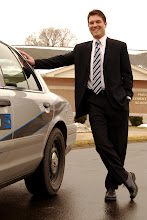Sometimes, when I tell someone that I provide physical security consulting services for schools, the person will respond, “Isn’t it a shame that there is even a need for people like you?” When I recover from the initial vocational “shame” that I feel, I often respond by stating, “Yes, and it’s also a shame that we need seatbelts when we drive and that it’s necessary to conduct fire evacuation drills!” A little dose of perspective can provide a good beginning for a discussion about effective security measures. Unlike vehicle safety and fire safety, however, there are no laws that govern physical security. For that reason, schools vary greatly in terms of what kind and extent of security systems, practices, and procedures they have in place. In some cases, the barn door is wide open and in other cases so much money was spent on surveillance cameras that no other aspect of security could be funded – and the barn door is still wide open. The best way to protect students, staff, and visitors is through an appropriate mix of security elements. In addition to these prevention components, schools must also engage in emergency preparedness activities. Unfortunately, a quick review of existing emergency plans often reveals something less than current and less than comprehensive. If only schools had access to the right tools and resources to aid in the process! In an attempt to improve school security, these aspects of perspective, appropriate elements, and tools and resources will be addressed.
Perspective The “Mayberry Mentality” is often used to describe administrators and staff members that assume nothing bad can happen at their school. That kind of thinking leads people to trade security for convenience. Examples of this include: the propping of unmonitored exterior doors, leaving items of value unattended, and resistance to wear staff identification badges. The remedy for this condition can be found in a good security awareness program. For example, administrators can introduce three-minute safety briefings at staff meetings, reward exemplary compliance with security practices, and ask individuals for commitments to change careless behaviors. People begin to wake from a sleepy, false sense of security when they begin to take personal responsibility for a safe learning environment. It should be noted that “scare techniques” are not being espoused.
For those that still think the need for security is a “shame,” one more illustration should help with perspective. When I was growing up in the Chicago area, my parents occasionally gave some Friday night direction for Saturday morning that went something like this, “Mom and I are going to sleep in. When you wake up, go outside to play and… don’t come back until supper.” No parents would do that today. Why? Times have changed! Now is the time to change our thinking about the need for a safer learning environment as well.
Appropriate Elements Schools should commit to addressing security with a collaborative approach. Nobody is skilled enough to make decisions in a vacuum. Organize a Safety Committee comprised of internal and external stakeholders, including administrators, support staff, teachers, facilities personnel, emergency responders, parents, and students. Too often, students are excluded from this kind of setting because they have been wrongly cast in an adversarial role. In addition to the fact that most students want a safe school, they are ahead of adults in terms of technology and have a much better pulse of what is really going on in the school. Current social media threats, including cyber-bullying and sexting, cannot be adequately addressed without the help of students. The Safety Committee should meet soon after the start of each semester. Meetings should follow clear agendas and last no longer than 60-90 minutes.
Instead of looking for a quick-fix solution, security should be approached holistically. A holistic approach recognizes that school assets (people, places, and things) must be prioritized. Since people (students, staff, and visitors) obviously rank first in terms of importance, we must first address the two areas that afford the most protection for people – access control and communications.
Beginning outside the school, vehicle barriers should be utilized to prohibit access to playgrounds, athletic fields, walkways, and main entries. Exterior doors should be closed and locked to restrict facility access to a single, main entry. To reduce key control issues, consider moving to an electronic access control solution. The main entrance should have a locked vestibule so that visitors cannot access the rest of the building until authorized by a staff member. That staff member should require the visitor to present photographic identification (ID), record the visitor’s name (instead of allowing the visitor to write potentially illegible or inaccurate information), and give the visitor a badge that hangs on a colored, break-away lanyard. Another exchange should be made at the conclusion of the visit. All adults, staff and visitors, should be required to wear an ID on a colored lanyard – staff lanyards and visitor lanyards should be separate and distinct colors.
Effective communications begins inside the facility by ensuring that every area is equipped to receive announcements via Public Address (PA) or intercom systems. In the same way, every room should have the capability to reach assistance via intercom call buttons or telephones. All telephones should be labeled with emergency dialing instructions (i.e. 9-911, main desk extension). PA systems should also have exterior capabilities. Administrators, custodians, and all staff members responsible for student movement should be required to carry a two-way radio. At minimum, schools should maintain a list of personal cellular phone numbers and staff members should be encouraged to program “ICE” (In Case of Emergency) information into their cellular phones.
Once improvement plans for access control and communications have been made, schools are ready to move on to other areas, such as video surveillance, intrusion detection, and landscaping that promotes natural surveillance.
Tools and Resources Improving security and emergency planning can be a daunting process without a clear path to follow. Recently, Christian Brothers Services, in partnership with RETA Security, introduced the “School Security Program Tools and Resources” binder. This 30-page binder is an organized way to develop and document important practices regarding security and emergency planning. Contents include:
- Forms for organizing a Safety Committee, keeping track of incidents, evaluating lockdown drills, and documenting parent reunification.
- Important tools such as a student safety audit, a staff skills survey, and a bomb threat checklist.
- Emergency planning items that address the Incident Command System (ICS), campus map information, emergency contact numbers, and crisis supplies.
- A list of valuable funding and planning resources, many of which are web-based.
Recent school violence incidents demonstrate the need for improved school security. Providing a safe learning environment for students, staff, and visitors is of paramount importance. An effective approach requires a right perspective, involves an appropriate mix of elements, and utilizes helpful tools and resources. Even though it is impossible to achieve perfect security, this approach can significantly reduce your risk. Now is the time to shamelessly make your school safer!




Nice jobs to safe guard school and children. Security Officers
ReplyDelete